Are you passionate about health and wellness? Do you have valuable insights and tips to share with others?
A health and wellness blog connects you with like-minded individuals. It helps you make a positive impact on their lives.
In this guide, we will walk you through the steps of creating a successful health and wellness blog. From choosing the right niche to monetize your content. Let’s dive in!
What is Health and Wellness Blogging?
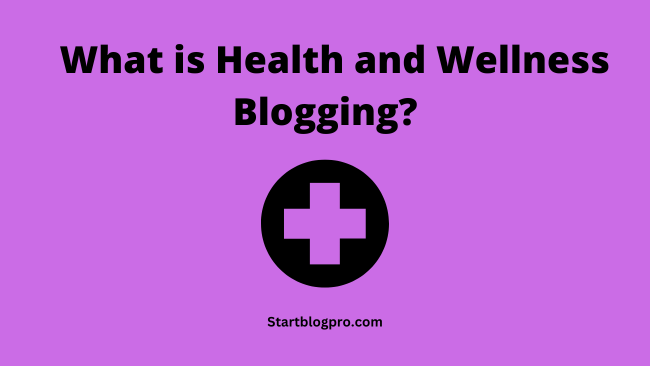
Health and wellness blogging is a form of online content. It covers topics like health, fitness, nutrition, mental well-being and wellness.
It allows you to share your knowledge, experiences, and tips. This helps others lead healthier and happier lives. These blogs can cover a wide range of topics:
- Fitness and Workouts: offer guidance on different exercises, workout routines, and fitness tips.
- Nutrition and Healthy Eating: Share recipes, meal plans, and information on different diets and their benefits.
- Mental Health and Well-being: Discuss topics such as stress management, mindfulness, meditation, and self-care.
- Women’s Health: discuss specific health issues that affect women. For example, reproductive health, hormonal balance, and pregnancy.
- Healthy Ageing: Explore ways to support vitality and improve well-being as one grows older.
- Sleep Optimization: offer tips and techniques to improve sleep quality and promote better health.
With health and wellness blogging you make a positive impact on your reader’s lives. It allows you to educate them about important health topics. Your blog can inspire them to make positive lifestyle changes.
What are the Benefits of a Health and Wellness Blog?
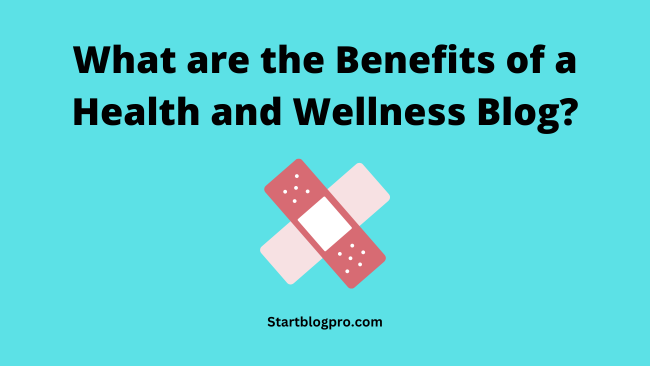
There are many benefits to starting a health and wellness blog. It helps you to achieve personal and professional growth.
The key advantages of starting health and wellness blogging are:
Establish Authority and Expertise
A health and wellness blog helps you become an authority in your field. With valuable blog content, you gain credibility and earn the trust of your readers.
This can lead to professional opportunities, like working with brands and healthcare professionals.
Educate and Empower Your Audience
The primary goal of a blog is to educate your audience. It helps the reader with health issues, preventive measures, and treatment options.
By providing valuable insights and practical tips on your blog. You empower your readers to take control of their health and make informed decisions.
Your blog can help people improve their well-being and encourage healthier lifestyles.
Attract Organic Traffic and Improve Visibility
Using SEO techniques helps your blog get more visitors. For example, optimizing your blog posts with relevant keywords.
Start by creating useful articles for your audience. Then, optimize them for search engines. You’ll appear higher in search results and reach more people.
Higher visibility can lead to more engagement, collaborations, and monetization opportunities.
Networking and Building Connections
Health and wellness blogging provides an excellent opportunity to network. It allows you to connect with like-minded individuals. For example, other bloggers, healthcare pros and health enthusiasts may like your blog too.
When you engage with your audience and build relationships with them. You can collaborate, guest post, and get support from them.
Inspires Positive Lifestyle Changes
When you share your personal experiences, success stories, and practical tips. It can inspire positive lifestyle changes in your readers.
Your blog can motivate them to adopt healthier habits. Try new fitness routines, explore different diets, and focus on their well-being. Having a blog that makes a positive impact on someone’s life is rewarding.
How to Choose the Right Health and Wellness Blogging Niche?
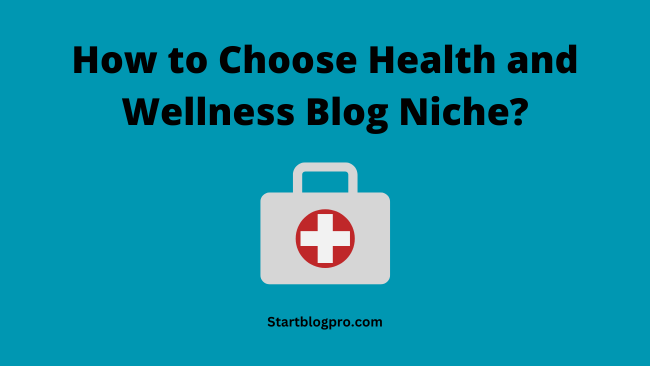
Picking the right niche is crucial for starting a blog. A focused niche allows you to tailor your content to a specific audience. You can position yourself as an expert in a particular area of health and wellness.
Here are five potential health-related blog niches to consider:
Fitness and Workouts
You can start a blog about how to exercise, get in shape, and stay healthy. It can include topics like strength training, cardio workouts, yoga, and home-based exercises.
It can guide in achieving fitness goals. Which covers maintaining a healthy lifestyle, and preventing injuries.
Nutrition and Healthy Eating
This niche focuses on nutrition and a balanced diet. You can offer insights into meal planning, recipes, superfoods, and dietary guidelines.
It addresses specific dietary needs, such as vegetarianism, veganism, or gluten-free diets.
Mental Health and Well-being
This blog niche covers stress management, mindfulness, meditation, coping strategies, and mental wellness. It can offer advice on a healthy mind-body connection.
Women’s Health
This niche focuses on women’s health issues. It can include reproductive health, hormonal balance, pregnancy, childbirth, and menopause.
You can provide a platform for discussions on women’s unique health concerns. Thus, empowering them with the right information.
Healthy Aging
This blog niche covers healthy ageing through exercise, nutrition, and lifestyle adjustments. You can provide information on maintaining vitality as one grows older. The blog can offer tips for a fulfilling and healthy life.
When picking a niche, consider your interests and expertise. Find out the paint points of your target audience. A niche that aligns with your passion and expertise will help you to create valuable content. It allows you to connect with your readers.
Choosing the Perfect Blogging Platform
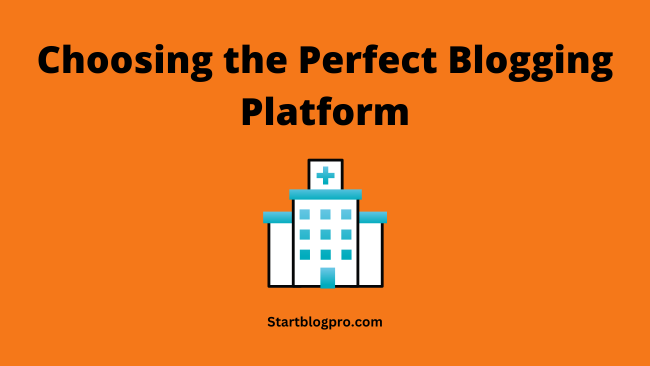
Selecting the right blogging platform is essential for the success of your blog. You require a user-friendly and customizable platform. The platform should offer features to support your blog’s growth.
Some of the most popular blogging platforms are:
Wix
Wix is an all-in-one website builder. It offers a user-friendly interface and a wide range of customizable templates.
It provides integrated web hosting, making your blog accessible to your readers. With Wix, you can create a professional-looking blog with no coding skills.
It also offers a variety of tools and plugins to enhance your blog’s functionality and design.
WordPress
WordPress is one of the most popular blogging platforms. It is a user-friendly content management system.
WordPress offers a high level of customization and flexibility. It allows you to create a unique blog that suits your brand.
WordPress offers thousands of themes and plugins. They enhance the functionality and design of your blog. It also has a large community of users, making it easy to find support and resources.
Blogger
Blogger is a free platform owned by Google. It is a straightforward option for beginners who want to start a blog.
Blogger provides easy-to-use templates. You can customize blog design with ease. But, it may have limitations with advanced customization and features.
When choosing a blogging platform, consider the following factors:
- Ease of use
- Customization options
- Plugins and themes
- Options for blog design and functionality.
Take some time to explore different platforms. Choose the one that best fits your needs and goals.
Select a Blog Name and Domain
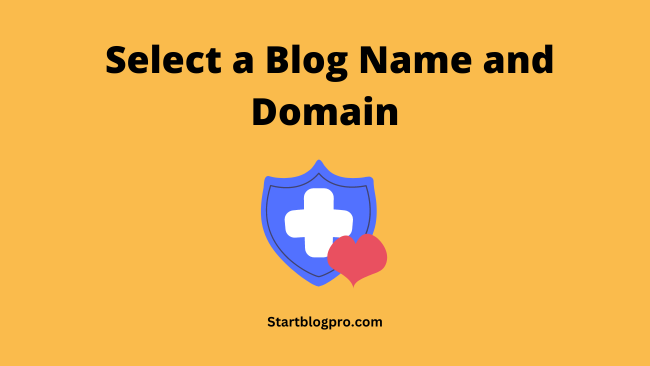
Your blog’s name helps in building your brand and attracting readers. So, it should be catchy, easy to remember, and reflect the focus of your blog.
Some tips for selecting a catchy blog name:
Brainstorm Keywords and Themes
Start by brainstorming keywords and themes related to health and wellness. Think about the topics you’ll cover in your blog. You can come up with unique aspects of your niche.
Use a blog name generator to come up with a blog name. Search using your keywords for blog name suggestions.
While generated names are not perfect. They can spark ideas and help you come up with a unique name.
Keep it Concise and Memorable
Choose a short and easy-to-remember blog name. Avoid long and complex names that are difficult to recall. Aim for a name that is memorable and stands out from the crowd.
Reflect Your Blog’s Focus
Your blog’s name should reflect the focus of your content. It should resonate with your target audience. This gives readers an idea of what to expect from your blog.
Use keywords relevant to your blog’s niche. To make your blog name engaging, use creative wordplay.
Check Domain Availability
Once you have a few potential blog names. Check the availability of domain names. Your domain name should be like your blog name. This makes it easy for readers to find your website.
If your preferred domain name is unavailable. Use slight variations or different domain extensions like .net, .co, or .health.
Your blog’s name and domain name are parts of your brand identity. They feature in your logo, social media profiles, and all your online interactions.
Take the time to choose names that represent your blog’s mission. It ensures that it resonates with your target audience.
Creating High-Quality and Engaging Blog Content
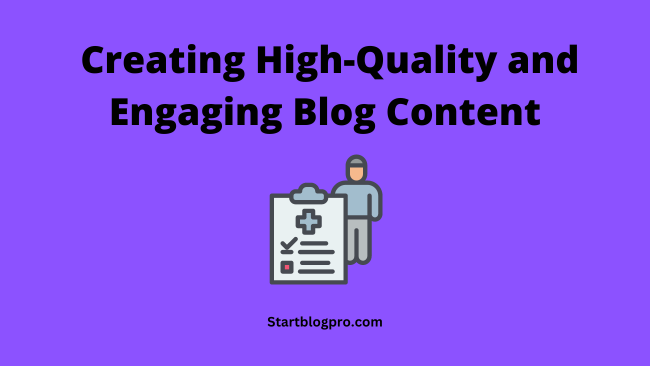
High-quality and engaging content is crucial for a successful blog. Some tips to help you create content that resonates with your audience:
Plan Your Content Strategy
Create a content calendar to organize your topics and publication schedule. This ensures a consistent flow of relevant content. It helps you stay organized.
Research popular topics in your niche. Identify gaps you can fill with your unique insights. Strive for a good balance between evergreen content and trending subjects.
Structure Your Blog Posts for Readability
To make your blog posts more readable and scannable. Use headings, subheadings, bullet points, and brief paragraphs. This breaks up the text and makes it easier for readers to digest the information.
Aim for in-depth guides that thoroughly cover the topic. Longer blog posts, typically around 1,500-2,000 words, perform better in search engines. But, focus on value over meeting a specific word count.
Craft Attention-Grabbing Blog Titles
Your blog titles play a crucial role in capturing readers’ attention. It encourages them to click and read your posts.
Craft compelling and attention-grabbing titles. Titles should reflect the content of your posts and pique readers’ curiosity. Use power words, numbers, and emotional triggers to make your titles more engaging.
Use Visuals to Enhance Your Content
Enhance your blogs with multimedia elements. The elements are images, infographics, and videos.
Visuals not only make your content appealing. But also conveys information effectively. Use high-quality and relevant visuals. It should support the written content and engage readers.
Proofread and Edit Your Content
Before publishing your posts. Proofread them for spelling, grammar, and formatting errors. Ensure that your writing is clear, concise, and easy to understand.
Use editing tools or seek feedback from others to improve the quality of your content. A well-edited and error-free blog post reflects professionalism. It also enhances the reader’s experience.
Tell Personal Stories and Experiences
Share personal stories and experiences. It will make your content more relatable and authentic. This will build trust and connect readers with you on a deeper level.
You can share your own journey, challenges, and successes. Personal anecdotes are powerful. They inspire your readers and help change their lives.
Remember: High-quality and engaging content provides value to your readers. Focus on their needs and questions. Then, provide practical tips and advice.
When you consistently deliver value through your content. You establish yourself as an authority in the health and wellness blogging niche.
How to Promote Your Health and Wellness Blog?
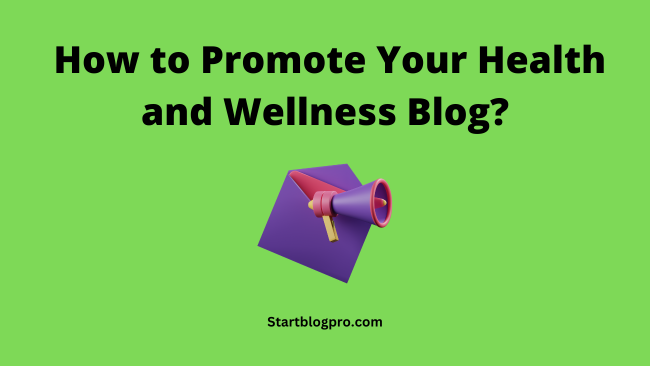
It is important to promote your blog. This will help you attract traffic, engage with readers, and grow your audience.
Some effective strategies to promote your blog are:
Optimize Your Blog for Search Engines
Use SEO strategies to improve your blog’s visibility in search engine results. Research relevant keywords and use them naturally in your content.
Use the keywords in on-page optimizations. Optimize your metadata, headings, and image alt tags. Provide value to readers and create content that aligns with their search intent.
Leverage Social Media Platforms
Use social media platforms like Instagram, Facebook, Twitter, and Pinterest. Share and promote your blog posts on these platforms.
Identify the platforms your target audience is using the most. Focus your efforts on these platforms.
Create engaging social media posts that drive traffic to your blog. You can use paid social media ads to increase your reach and attract new readers.
Build an Email List
Offer a newsletter or opt-in incentive on your blog. This will encourage readers to subscribe to your email list.
Use email marketing to send regular newsletters. It can cover your latest blog posts, exclusive content, and health tips.
Building an email list establishes a direct connection with your readers. You can notify them whenever you publish new content.
Guest Blogging and Collaborations
Collaborate with other bloggers or websites. Write guest posts for them. This exposes your blog to new audiences. It will establish your authority in the health community.
Reach out to influencers or experts in your niche. You should look for potential collaborations or interviews.
Take part in health-related forums, groups, and online communities. Offer valuable advice and share your blog posts when relevant.
Monitor and Analyze Your Blog’s Performance
Regularly track your blog’s analytics to assess its performance. Use tools like Google Analytics or the built-in analytics of your blogging platform.
This way you gain insights into traffic, popular posts, user demographics, and more. Analyzing your blog data helps you understand what’s working. It shows you the things you need to improve.
Use the information to refine your content strategy. Focus on areas with the highest engagement.
Remember: blog promotion is an ongoing process. Be consistent and proactive in your promotional efforts. Experiment with different strategies. Find what works best for your audience.
Optimizing Your Blog for Search Engines
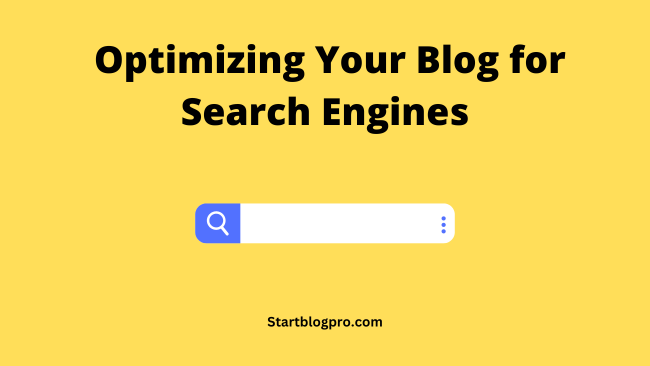
It is important to optimize your health and wellness blog for search engines. This will increase organic traffic and help you reach a wider audience.
Some key SEO strategies to use are:
Keyword Research and Optimization
Carry out keyword research and identify keywords related to your blog’s niche. Use these keywords naturally in your blog posts, headings, subheadings, and metadata.
Focus on long-tail keywords. They have lower competition but higher search intent relevance. Optimize your images with descriptive filenames and alt tags. They should include relevant keywords.
Quality Content and User Experience
Search engines value high-quality and valuable content. Create in-depth, well-researched blog posts that provide useful information to your readers.
Structure your content with headings, bullet points, and brief paragraphs. This enhances readability. Ensure that your blog is mobile-friendly and has a fast loading speed. These factors lead to a positive user experience.
Internal and External Links
Internal links refer to the linking of relevant blog posts or pages within your blog. This helps search engines understand the structure and hierarchy of your content.
It encourages readers to explore more of your content. External linking involves linking to reputable and authoritative sources.
These sources should support your claims or provide additional information. This can improve the credibility and relevance of your blog posts.
Metadata Optimization
Optimize your blog post metadata like titles and meta descriptions. They appear in search engine results and often influence click-through rates
Craft compelling and keyword-rich titles and meta descriptions. They should summarize your content and entice users to click.
Social Media Sharing and Engagement
Social media signals indirectly affect your blog’s search engine rankings. Promote your blog posts on social media platforms. Encourage readers to engage with your content.
Social shares and engagement increase your blog’s visibility. Thus, attract more traffic. Engage with your audience. Respond to comments and foster discussions on social media.
Regular Blog Updates and Fresh Content
Search engines favour blogs with fresh and relevant content. Aim to publish new blog posts and update older posts when necessary.
This signals to the search engines that your blog offers up-to-date information. Review old content and improve based on developments or changes in your industry.
By using SEO strategies, you can improve your blog’s visibility in search results. This helps you attract a larger audience of health and wellness enthusiasts.
Build a Community and Connect with Readers
For long-term success, build a community around your blog. Here are some strategies to connect with your readers and foster engagement:
Encourage Comments and Feedback
Encourage your readers to leave comments and provide feedback on your blog posts. Respond to the comments and engage users in meaningful discussions.
This shows that you value your user’s input. It also creates a sense of community on your blog. Ask questions at the end of your blog posts. It will encourage readers to share thoughts and experiences.
Offer Exclusive Content and Resources
Provide exclusive content and resources to your loyal readers. This can include downloadable guides, checklists, or e-books related to health and wellness.
You can create a members section on your blog. So that readers can access premium content or part in exclusive events or webinars.
You build a loyal and engaged audience by offering valuable and exclusive content.
Host Contests or Giveaways
You can organize contests or giveaways on your blog. This encourages readers to take part and share your content on their networks.
You can offer health and wellness-related prizes. For example, fitness equipment, books, or wellness retreats. Contests and giveaways can generate buzz around your blog and attract new readers.
Take part in Health Communities
Engage with health and wellness communities both online and offline. Take part in forums, groups, and online communities. Especially, where your target audience gathers.
Offer valuable advice, answer questions, and share your blog posts where relevant. Attend health and wellness events. Network with professionals and readers in your niche.
Building relationships can drive traffic to your blog and expand your blog’s reach
Collaborate with Other Bloggers and Influencers
Collaborate with other bloggers and influencers. It helps you expand your reach and tap into new audiences.
Guest post on other blogs or invite them to contribute guest posts on your blog. You can collaborate on social media campaigns or co-host webinars or podcasts.
By working with other influencers, you can leverage each other’s audiences. This allows you to build good relationships and get new traffic sources.
Building a community takes time and effort, but the rewards are worth it. By fostering engagement, encouraging discussions, and providing valuable resources.
That’s how you create a supportive and loyal community around your blog.
Monetize Your Health and Wellness Blog
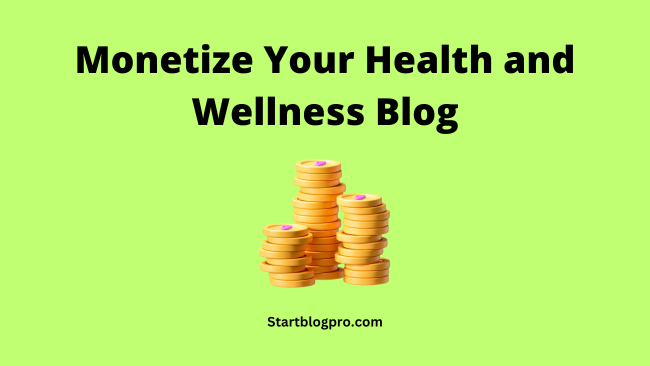
To generate income and turn your passion into a business. You need to monetize your health and wellness blog. Here are some popular ways to monetize your blog:
Affiliate Marketing
You can partner with health-related companies. Promote their products or services through affiliate links on your blog.
When readers buy through these links, you earn a commission. Focus on products that align with your blog’s niche. For example, supplements, fitness equipment, or wellness programs.
Be transparent and disclose your affiliate relationships to maintain trust with your audience.
Display Advertising
Use display ads on your blog. You can use platforms like Google AdSense. Display relevant ads that cater to your audience’s interests.
But, do not overload your blog with ads. It will affect the user experience. Place ads in the right place and ensure they blend well with your blog’s design.
Sponsored Content and Brand Collaborations
Work with brands and companies in the health and wellness industry. You can create sponsored content for them. For example, product reviews, sponsored blog posts, or social media promotions.
You should collaborate with brands that align with your blog’s values. They should resonate with your audience. Always disclose the sponsored content to maintain transparency.
Online Courses and Digital Products
You can create and sell online courses, e-books, or digital products on health and wellness. Share your expertise and provide valuable resources to your readers.
Develop courses on specific topics or offer comprehensive wellness programs. Digital products provide a passive income stream. They allow you to showcase your expertise.
Coaching and Consultation Services
Use your knowledge and experience to offer coaching or consultation services. Provide one-on-one coaching sessions or group programs. It will help individuals achieve their health and wellness goals.
Market your services through your blog and social media platforms. Use your blog content to establish your credibility and expertise.
E-commerce and Merchandise
Launch an e-commerce store on your blog. This way you can sell health and wellness-related products. You can include branded merchandise, nutritional supplements, fitness equipment, or healthy snacks.
Use your blog as a platform to promote your products and drive sales. Ensure that the products you sell align with your blog’s niche. Your products should provide value to your audience.
Remember, monetization should not compromise the quality of your blog. Provide value to your readers and maintain transparency in your monetization efforts. Choose monetization methods that align with your blog’s niche. It should also resonate with your audience.
Stay Updated with Health and Wellness Trends
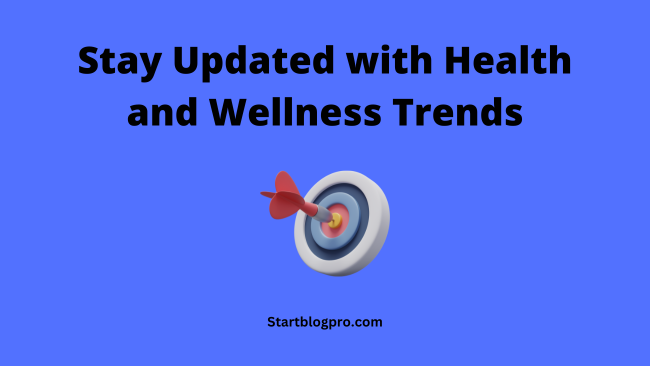
The health and wellness industry is ever-growing. With emerging trends, research, and discoveries.
Staying informed about the latest health and wellness trends is important. This will help you stay relevant and provide up-to-date information to your readers.
Some strategies to help you stay updated:
Follow Industry Publications and Websites
Subscribe to industry publications, websites, and newsletters. Esp. That focus on health and wellness. These sources often provide the latest research, news, and trends in the industry.
Stay informed about new studies, findings, and developments related to your blog’s niche.
Attend Health and Wellness Events and Conferences
Take part in events, conferences, and workshops. These events provide opportunities to network with professionals in the industry.
You can learn from experts in various fields. Stay updated on the latest research and products. Keep an eye on trends by attending seminars and keynote speeches.
Engage with Experts and Influencers
Follow experts, and influencers in the health and wellness industry. You can subscribe to them on social media platforms.
Engage with their content, ask questions, and take part in discussions. This allows you to tap into their knowledge and insights. So that you stay updated with the latest trends they share.
Conduct Regular Research
Conduct research and explore new topics in your field. Read scientific studies, research papers, and reputable publications. You will gain a deeper understanding of emerging trends and developments.
Use reliable sources and share correct information with your readers.
Seek Feedback from Your Audience
Engage with your audience and seek feedback. Conduct surveys, polls, or ask open-ended questions to gauge their preferences and needs.
Use this feedback to tailor your content. Focus on the trends and topics that your readers find most valuable.
By staying updated with the latest health and wellness trends. You can position yourself as a reliable source of information. This way, you provide your readers with valuable insights and advice.
Conclusion
Starting a health and wellness blog is an exciting journey. It allows you to share your passion for well-being. Connect with others, and make a positive impact on their lives.
By following the steps in this ultimate guide. You can create a successful health and wellness blog. A blog that resonates with your audience and helps you achieve your goals.
Always provide value to your readers. Stay informed about the latest trends, and foster engagement within your community.
With dedication and perseverance. Your blog will become a trusted resource. It will be a platform for inspiring positive lifestyle changes.
Good luck on your health and wellness blogging journey!
